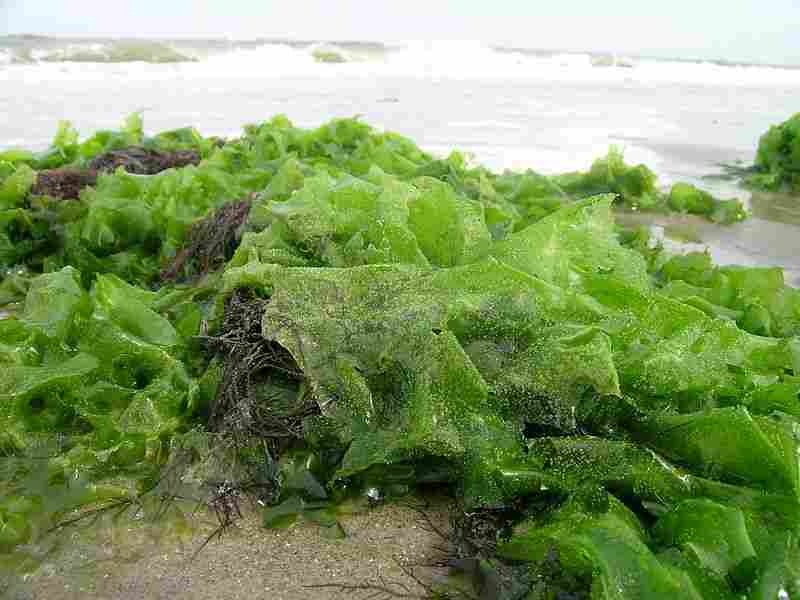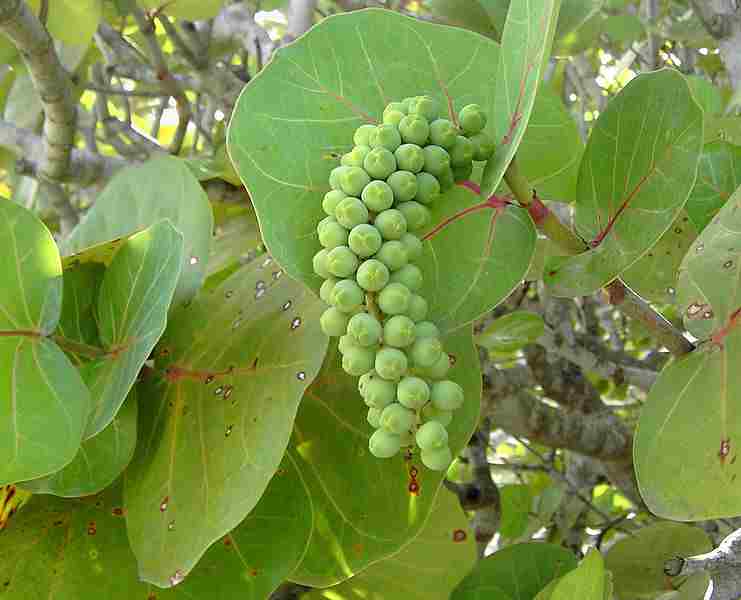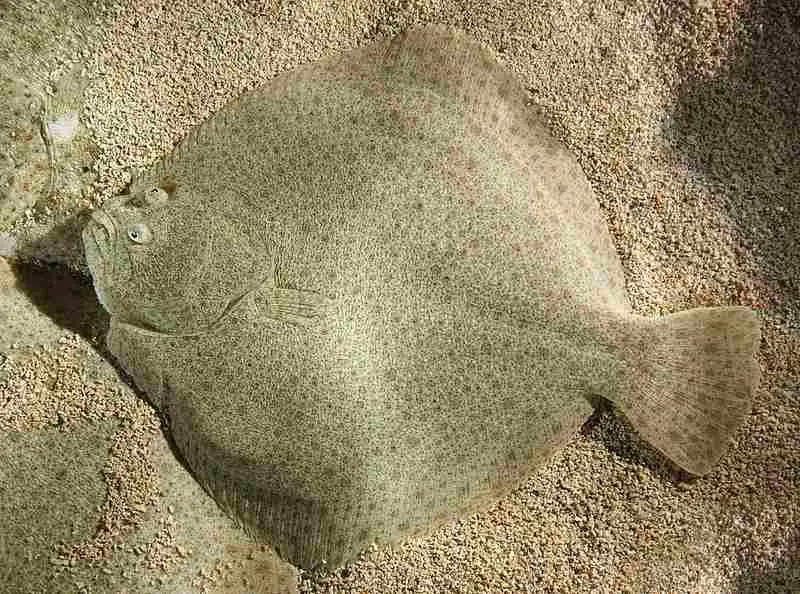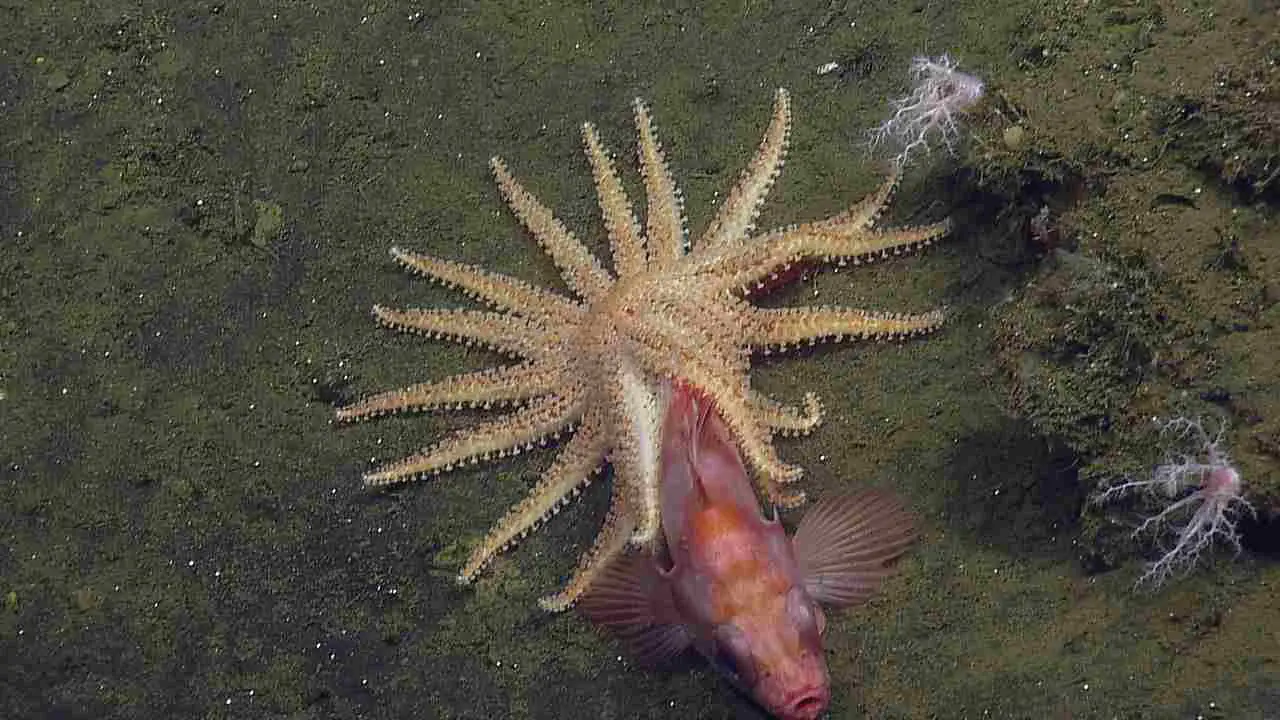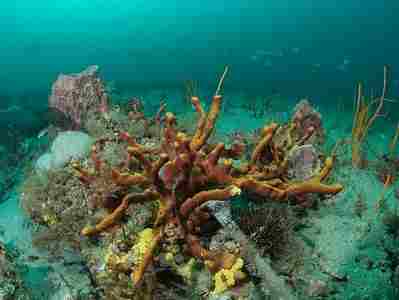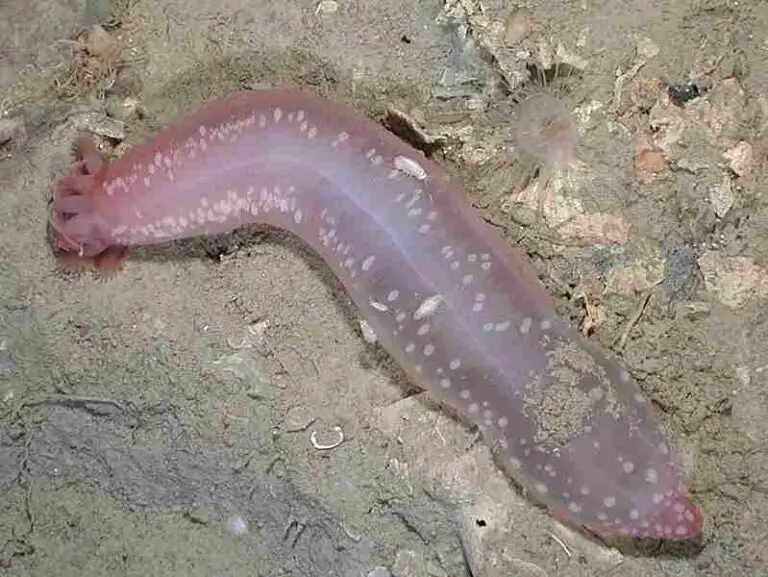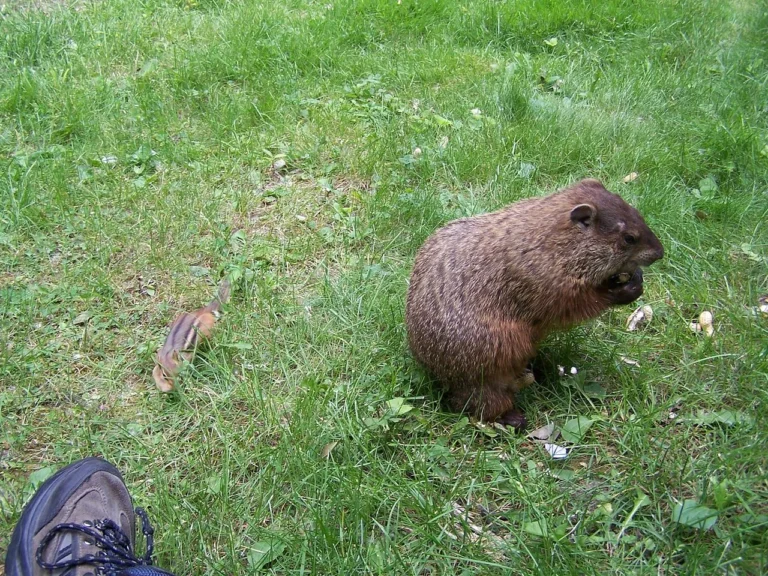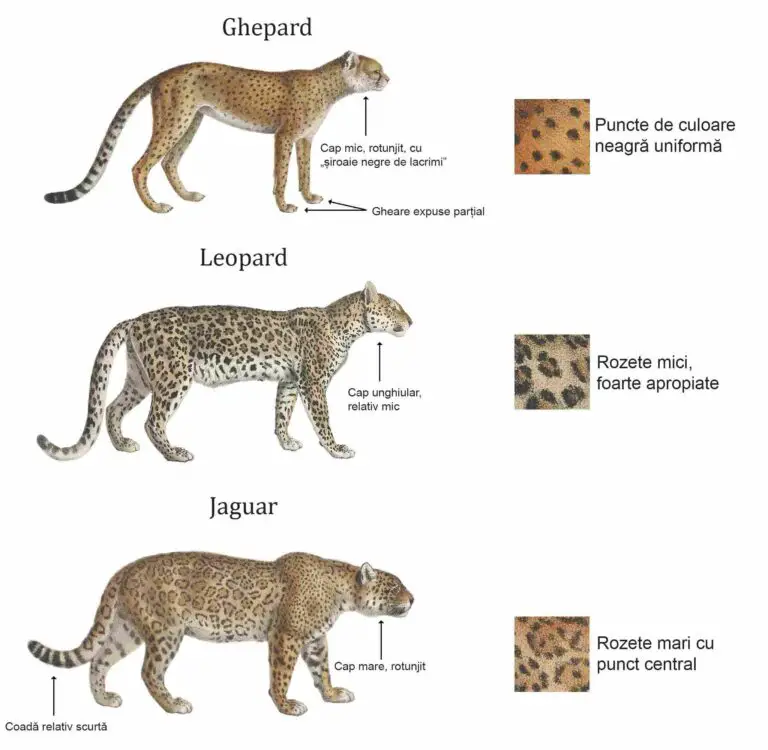9 Plants in the Chesapeake Bay and Their Characteristics Discussed
Plants in the Chesapeake Bay are; widgeon grass, eelgrass, sea rocket, Eurasian watermilfoil, wild celery, sago pondweed, purple coneflower, buttonbush, and red maple.
This article discusses some plants in the Chesapeake Bay, and their characteristics, as follows;
1). Widgeon Grass: One of the Plants in the Chesapeake Bay
Widgeongrass (Ruppia maritima) is a common and ecologically significant, submersed aquatic vegetation found in the Chesapeake Bay.
This underwater grass exhibits various characteristics that are essential for understanding its role in the ecosystem. Some of such basic characteristics are discussed in the subsection below;
Basic Characteristics of Widgeon Grass
Some characteristics of widgeon grass include its distinctive growth form, taxonomy, leaf structure, habitat, and geographic distribution.
Widgeon grass features delicate, thread-like leaves that grow alternately along slender, and branching stems. These fine, filamentous leaves contribute to its distinctive appearance and enable it to thrive in underwater environments.

In terms of taxonomy, widgeon grass belongs to the ditch-grass family (Ruppiaceae). It is classified broadly as a submersed aquatic grass, which indicates its affinity for underwater habitats.
As stated earlier, the leaves of widgeon grass are threadlike and alternate along the stems. They can reach a maximum length of about 10 centimeters (4 inches), and have an average width of about 0.6 millimeters.
Widgeon grass is commonly found in the Chesapeake Bay, occupying various habitat types within the bay. It occurs in both freshwater and high-salinity zones, showcasing its adaptability to different environmental conditions.
With regards to distribution, widgeon grass can be described as a widespread species, which occurs throughout the Chesapeake Bay region. Its tolerance is not limited to a specific salinity range, which allows it to grow in various areas within the bay.
Overview of Submerged Aquatic Vegetation in the Chesapeake Bay
The Chesapeake Bay is home to a diverse community of submerged aquatic vegetation (SAV). Apart from widgeon grass, the bay supports up to 26 different species of SAV, each with its unique biotic attributes and habitat preferences.
Submerged aquatic vegetation species in the Chesapeake Bay include; freshwater, estuarine, and marine species respectively. They are summarily outlined below;
Freshwater plants in the Chesapeake Bay include wild celery.
Estuarine plants are species like sago pondweed and redhead grass which inhabit the estuarine segments of the Chesapeake Bay.
Eelgrass and widgeon grass, among others, are found in the marine regions of the bay.
Widgeon grass, with its adaptability and prevalence, occupies a vital autotrophic position in the Chesapeake Bay's ecosystem. It provides usable habitat and food resources for various aquatic organisms and contributes to the overall vitality and species richness of this distinctive estuary.
As of recent observations, widgeon grass has become roughly the most common submerged aquatic vegetation in the Chesapeake Bay, showcasing its ecological significance and its effectiveness as a foundational species within the ecosystem.
Conservation efforts and the preservation of SAV like widgeon grass are therefore important for maintaining the (ecological) equilibrium of the Chesapeake Bay.
2). Eelgrass
Eelgrass, scientifically referred to as Zostera marina, is an essential biotic component of the Chesapeake Bay's submerged aquatic vegetation (SAV) community. Some of its basic characteristics are discussed below.
Characteristics of Eelgrass
Characteristics of eelgrass include distinctive root-anchored growth, salinity tolerance, and ecosystem engineering capability.
As an underwater vascular plant, eelgrass possesses long, ribbon-like leaves [1]. These ribbon-shaped leaves are among its distinguishing features and adaptations it to its aquatic environment. Eelgrass plants grow extensively from the seafloor, where their roots are embedded, up towards the water's surface.
Also, eelgrass thrives in the saltier waters of the Chesapeake Bay. It is typically dominant in areas characterized by higher salinity, which are commonly found in the middle and lower sections of the bay.
A broad range of important ecosystem functions are provided by eelgrass within the Chesapeake Bay, including the formation of foraging areas and shelter for young fish and invertebrates. Also, it serves as a food source for migratory waterfowl and sea turtles, and its submerged surfaces serve as spawning grounds for various species, such as the Pacific herring.
Benefits of Eelgrass
Benefits of eelgrass include; habitat provision, food production, and service as spawning ground.
Eelgrass beds provide important habitat for numerous aquatic species, especially juvenile invertebrates and fish. The dense growth of eelgrass offers shelter and protection to these organisms, allowing them to thrive.
Also, eelgrass is an essential source of food for migratory waterfowl and sea turtles, many of which ate herbivorous and omnivorous. These animals depend on the nutritious biomass of eelgrass, and/or its smaller inhabitants for their sustenance.
Lastly, the eelgrass beds serve as spawning surfaces for various species, contributing to the reproductive success of these organisms and enhancing the biological diversity of the Chesapeake Bay.
Additional Notes on Eelgrass and Its Role(s) in the Chesapeake Bay
The name "eelgrass" is derived from the elongate, ribbon-like appearance of its leaves. These leaves are reminiscent of the geometric morphology of eels, hence the name.
Eelgrass, with its ecological significance and vital role in the Chesapeake Bay's ecosystem, is an indicator of the health and sustainability of this estuary.
It showcases the importance of preserving and conserving submerged aquatic vegetation to ensure the well-being of the bay's aquatic life and habitats.
3). Sea Rocket: One of the Plants in the Chesapeake Bay
Sea rocket, scientifically known as Cakile maritima, is a distinctive coastal plant that can be found in the Chesapeake Bay region. Here, some of its basic characteristics are highlighted.
Characteristics of Sea Rocket Plant
Characteristics of sea rocket plant include its ribbon-like appendages, coastal habitat preference, and edibility.
Generally, sea rocket has ribbon-like stems and leaves, which help it adapt to its coastal environment in terms of interaction with water currents and solar radiation. It is succulent and halophytic [5], and typically grows in sandy areas and thrives along the seashores.
As implied above, sea rocket is a pioneer species in coastal regions, especially in rocky shores and sandy beaches. It is known for colonizing areas that are challenging for most other plant species due to its ability to withstand the harsh conditions of such zones.
Lastly, while most parts of the plant can be consumed, they may have a slightly bitter taste when eaten raw or cooked. Additionally, the roots of sea rocket can be dried and processed into flour, making them a useful food resource.

*Additional Notes and Reiterations
Sea rocket is edible. However, the taste of sea rocket leaves can be somewhat bitter, so it may be more palatable when thoroughly cooked.
Moreover, the roots of sea rocket can be dried and processed to make flour, thereby expanding its culinary applications.
Sea rocket belongs to the mustard family (Brassicaceae). This family includes various plants known for their diverse edible and non-edible species.
In terms of habitat, sea rocket is abundant along sandy beaches, and it has adapted to these environments. Its ribbon-like stands can extend along the waterline for hundreds of meters in sandy beach regions, such as Yyteri and Kalajoki.
The height of sea rocket can vary. It is typically a summer annual plant, and its size can range from 6 to 20 inches (about 15 to 50 cm) in height. Some larger specimens may be as wide as they are tall, which gives them a tumbleweed-like geometric form.
Sea rocket's adaptation to coastal environments, its edible components, and its role as a pioneer species make it a valuable and interesting plant in the Chesapeake Bay region.
4). Eurasian Watermilfoil
Eurasian watermilfoil, scientifically called Myriophyllum spicatum, is a non-native underwater plant that possesses feathery leaves. Some characteristics of this plant are highlighted as follows;
Characteristics of Eurasian Watermilfoil
Characteristics of Eurasian watermilfoil include its dense underwater growth pattern, and freshwater-brackish water tolerance.
Eurasian watermilfoil is a submersed aquatic plant known for its fine, feather-like leaves that grow densely along the stems. These underwater leaves are typically arranged in whorls that encircle the stem.
The invasive species can be found in quiet freshwater and slightly brackish waters within the Chesapeake Bay region. It thrives in a relatively-broad variety of aquatic environments.
Additional Notes and Reiterations On Eurasian Watermilfoil
Areas that have been most affected by Eurasian watermilfoil include various zones across North America, including the Chesapeake Bay and numerous states in the U.S. where it thrives as an invasive species. Additionally, it has invaded several Canadian provinces [3].
While Eurasian watermilfoil is an invasive species, it still provides some ecosystem services. Benefits of Eurasian watermilfoil include its ability to serve as underwater microhabitat for fish and various invertebrates, offering shelter and viable foraging areas. Some wildlife also utilize it as a source of food.
Eurasian watermilfoil was likely introduced to Canada through the transportation of recreational boats, fishing equipment, and other movables that can come into contact with the propagative parts of this invasive plant. It may have been introduced either directly or indirectly through human activities.
The invasive range of Eurasian watermilfoil spans numerous locations in the U.S. and Canada. It is now present in three Canadian provinces: Ontario, Quebec, and British Columbia. In the U.S., it has spread to over 40 states.
Eurasian watermilfoil is known for its rapid growth and its capacity to dominate aquatic environments, making it a species of concern in various regions, including the Chesapeake Bay. Efforts to manage its spread and ecological/environmental impact are ongoing in the affected areas.
5). Wild Celery: One of the Plants in the Chesapeake Bay
Wild celery, scientifically referred to as Vallisneria americana, is an underwater grass with some distinct features. Its basic characteristics are highlighted in the following subsection.
Characteristics of Wild celery
Characteristics of wild celery include its elongate leaves, and specified water tolerance.
Wild celery is characterized by long, flat, ribbon-like leaves that can grow close to 5 feet in length. These leaves possess finely toothed edges, blunt and rounded tips, and a light green stripe running down the center. Leaves grow in a cluster from the base of the plant, which is usually white or light in color.

This aquatic plant is commonly found in freshwater and slightly brackish waters. It thrives in the upper Chesapeake Bay, including areas such as the Susquehanna Flats, and its major tributaries like the Potomac River and the York River.
Edibility and Medicinal Uses of Wild Celery
Wild celery has a history of medicinal use. It is an aromatic herb with a bitter taste, known to have several medicinal properties. Medicinal uses of wild celery include blood pressure reduction, indigestion relief, uterine simulation, and anti-inflammatory applications [2]. They are outlined below;
Wild celery is believed to help reduce blood pressure.
It has also been used to relieve indigestion and gastrointestinal discomfort.
In some cases, the plant has been employed to stimulate the uterus in pregnant females.
Wild celery is thought to possess anti-inflammatory properties.
The common names for wild celery include "water celery," and "smallage."
Humans can consume wild celery. The plant's stalks, leaves, flower buds, and even the seeds can be eaten. However, the taste and texture may vary, with older plants potentially being less desirable for consumption.
Generally, wild celery is an ecologically significant species in the Chesapeake Bay region and provides important habitat and food resources for wildlife, including waterfowl and various fish species. Efforts are ongoing to maintain and restore its presence in the ecosystem.
6). Sago Pondweed
Sago pondweed, scientifically named Stuckenia pectinata, is an aquatic grass native to the Chesapeake Bay region. It possesses some basic characteristics, which are highlighted here.
Basic Characteristics of Sago Pondweed
Characteristics of sago pondweed include cluster growth-form, and broad water tolerance range.
Sago pondweed is characterized by slender, branching stems that support bushy clusters of thread-like leaves. These leaves grow alternately along the stems, thereby creating a distinct appearance.
Also, this submerged aquatic vegetation is native to the Chesapeake Bay. It thrives in a variety of water environments, including alkaline, brackish, and hypersaline waters. Sago pondweed can be found in ponds, quiet rivers and lakes, as well as saltmarshes and ocean shores. It often forms extensive, dense vegetative masses in these habitats.
Habitat of Sago Pondweed
Sago pondweed is versatile in its habitat preferences and can be found in various types of water bodies including;
1. Freshwater environments
2. Moderately brackish waters
3. Ponds
4. Quiet rivers
5. Lakes
6. Saline marshes
7. Ocean shores
Its ability to adapt to such diverse conditions allows it to occupy different niches within the Chesapeake Bay watershed.
Difference Between Sago and Horned Pondweed
Sago pondweed (Stuckenia pectinata) and horned pondweed (Zanichellia palustris) are distinct species of submerged aquatic vegetation found in aquatic ecosystems. One major difference between sago and horned pondweeds lies in the leaf arrangement; where the former has dense clustered leaves and the latter has whorl leaf arrangements.
Sago Pondweed has alternately arranged leaves, with bushy clusters of thread-like leaves that grow along the slender, branching stems. These leaves create a distinctive morphology, which resembles a dense cluster on the water's surface.
On the other hand, horned pondweed has oppositely arranged or whorled leaves, which means that the leaves are positioned directly opposite each other or in circular whorls around the stem. This is a clear contrast to the alternate leaf arrangement of sago pondweed.
Understanding these differences in leaf arrangement is crucial for correctly identifying and distinguishing between the two species in aquatic ecosystems.
7). Purple Coneflower: One of the Plants in the Chesapeake Bay
Purple coneflower, scientifically referred to as Echinacea purpurea, is a notable flowering plant with distinct characteristics, that can be found in the Chesapeake Bay.
Basic Features of the Purple Coneflower
Characteristics of purple coneflower include its dome-shaped flowers, rough stems, and seasonal blooming pattern.
Purple coneflower boasts large, lavender-colored flowers. These flowers have a distinctive spiny, dome-shaped, brown or orange center, which is often referred to as the central disk [4].
The plant's stems are covered in small, rough hairs. This rough texture sets them apart from glabrous or smooth stems.
Also, flowers of the purple coneflower plant, typically bloom in the early summer months.
Uses of Purple Coneflower Plant
Purple coneflower, holds significant importance as an herbal medicine. It has been used for centuries for various purposes, including common cold treatment, and anti-inflammation.
Echinacea has been traditionally used to address common cold symptoms. The plant may help alleviate symptoms like coughs, bronchitis, and upper respiratory infections.
It has also been used to manage some inflammatory conditions due to its potential anti-inflammatory properties.
Optimal Growing Conditions of Purple Coneflower
Purple coneflowers grow best under specific conditions. Optimal growing conditions of purple coneflower include; abundant sunlight, well-draining soil, and presence of organic matter (in the soil).
Coneflowers thrive when exposed to full sun, which means they need at least six hours of direct sunlight each day. Well-draining soil is essential for their growth. It prevents waterlogged roots and enables the plant flourish.
Purple coneflowers are known for their tolerance to dry conditions or drought, making them an excellent choice for areas with sporadic rainfall or extremely dry summers.
In terms of soil preparation, loosening the soil to a depth of 12 to 15 inches and incorporating compost or aged manure can enhance the growth of purple coneflowers. While they can tolerate poor soil, providing them with the right conditions typically yields better results.
*Additional Notes and Reiterations
Echinacea purpurea, commonly referred to as the purple coneflower, is also known by several other names, including; hedgehog coneflower, broad-leaved purple coneflower, and eastern purple coneflower.
The purple coneflower is not only admired for its ornamental value but also for its rich history of medicinal use.
Native Americans have historically utilized various parts of the plant, including the roots, leaves, and seeds, for medicinal purposes.
It has been employed to treat a range of infections, including syphilis, typhoid, and malaria. Although research on echinacea is somewhat limited, it has been traditionally used to address conditions such as coughs and the common cold. These properties make it an effective and important herbal remedy in traditional medicine.
8). Buttonbush
Buttonbush (Cephalanthus) is a distinctive native shrub that is known for its unique characteristics.
Basic Features of Buttonbush Plant
Basic features of buttonbush plant include its clustered flowers, fragrance, habitat preference, and fruits.
Arguably the most notable feature of the buttonbush is its ball-like clusters of small, white flowers. These flower balls can be quite large, sometimes exceeding an inch in diameter. They are arranged in spherical, dense, inflorescences.
Buttonbush's flowers are also fragrant, making them attractive to pollinators like butterflies, bees, and hummingbirds. The fragrance contributes to its appeal in the landscape.
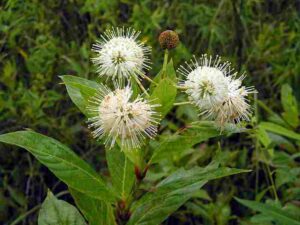
In terms of preferred habitat, buttonbush is typically found in wetland ecosystems, including swamps, floodplains, mangroves, pocosins, riparian zones, some and moist forests. It thrives in areas with consistent moisture, including within standing water.
The flowers of the buttonbush eventually give way to interesting, spherical fruits, which contribute to the unique appearance of this plant.
Uses of Buttonbush Plant
Uses of buttonbush plant are medicinal, ecological and ornamental.
Like some other Chesapeake Bay plants, Native Americans made use of buttonbush for its medicinal properties. They prepared decoctions from the bark for various purposes, including treatments for sore eyes, antidiarrheal agents, anti-inflammatory and rheumatism medications, skin astringents, headache and fever relief, and remedies for venereal diseases. The bark was even chewed to relieve toothaches.
The buttonbush is also valuable as an ecological tool for attracting wildlife. Ducks and other water birds, as well as shorebirds, are known to consume its seeds. This makes it an important plant for providing food in wetland habitats.
Besides its practical uses, buttonbush is an ornamental plant, featuring fragrant flowers that draw in pollinators, including various birds, and insects like butterflies and bees. Its distinctive spherical flower clusters make it an attractive addition to landscapes with wet areas.
*Additional Notes and Reiterations on Buttonbush Plant
Buttonbush earned its name from the appearance of its flowers. The spherical clusters of small white flowers around the fruits resemble small knobs or buttons. These flower balls are usually about an inch in diameter and dangle from slender stalks.
Interesting facts about buttonbush plant are;
1. Buttonbush can be considered a pioneer species in frequently flooded swamp zones, often establishing itself on rotting logs and stumps.
2. Its fragrant flowers are not only visually appealing but also serve as a magnet for pollinators, thereby enhancing biodiversity in the ecosystem.
3. Besides providing food in the form of seeds, ducks and shorebirds also utilize buttonbush as a shelter or habitat.
4. The plant's native habitat includes a range of wetland environments, from marsh edges and riparian zones to moist forests and floodplains. It is highly adaptable to inundated areas with non-flowing water.
9). Red Maple: One of the Plants in the Chesapeake Bay
The red maple (Acer rubrum) is a deciduous tree that is known for its adaptability and hardiness, which is commonly found in the Chesapeake Bay watershed and throughout eastern North America.
Basic Characteristics of Red Maple
Basic characteristics of red maple include serrated leaves; broad geographic range, multiple ecosystem services, and growth seasonality.
The red maple goes by several common names, including swamp maple, soft maple, and water maple. In Japan, it is associated with abundant blessings, peace, beauty, patience, the arrival of autumn, and more, and it's planted to bring value and luck to homes.
Leaves of red maple have serrated edges, with numerous tooth-like projections compared to other maple species. This distinctive feature helps identify them. Sugar maple leaves, for instance, have smoother edges.
Red maples are native to eastern and central North America, and are among the most widespread deciduous trees in the region.
With regards to ecological role(s), red maples are crucial to eastern deciduous forests, contributing to the vitality and long-term sustenance of these ecosystems. They are particularly abundant and widely distributed in the eastern part of North America.
Red maples thrive in a variety of environments, from wet to xeric (drought-prone) forest and woodland habitats. They are also known to dominate swamps and other wetland areas. These trees are well adapted to diverse soil conditions, making them highly versatile.
Various kinds of maples, including the red maple, are famous for their sap. Maple sap is significantly sweeter than that of other trees and can be used to produce maple syrup, a delicacy enjoyed worldwide [6].
During the fall season, red maple leaves turn various shades of scarlet, orange, and yellow, contributing to the vibrant autumn landscapes of eastern North America.
Differences Between Red Maple and Sugar Maple
Red maple is sometimes confused with sugar maple.
The identifiable difference between red maple and sugar maple lies in the characteristics of their respective leaves. Red maple leaves have more pronounced, toothed edges, while sugar maple leaves are smoother. The differences in leaf geometry and structure are often key identifiers.
Conclusion
Plants in the Chesapeake Bay are;
1. Widgeon Grass
2. Eelgrass
3. Sea Rocket
4. Eurasian Watermilfoil
5. Wild Celery
6. Sago Pondweed
7. Purple Coneflower
8. Buttonbush
9. Red Maple
References
1). Herad, H. E.; Solano-Areallano, E.; Leal-Ramirez; C.; Franco-Viscaino, E. (2011). "The length-times-width proxy for leaf area of eelgrass: Criteria for evaluating the representativeness of leaf-width measurements." Aquatic Conservation Marine and Freshwater Ecosystems 21(7):604-613. Available at: https://doi.org/10.1002/aqc.1219. (Accessed 12 October 2023).
2). Illes, J. D. (2021). "Blood Pressure Change After Celery Juice Ingestion in a Hypertensive Elderly Male." Journal of Chiropractic Medicine 20(7). Available at: https://doi.org/10.1016/j.jcm.2021.04.001. (Accessed 12 October 2023).
3). Madsen, J. D. (1998). "Predicting Invasion Success of Eurasian Watermilfoil." Journal of Aquatic Plant Management 36. Available at: https://www.researchgate.net/publication/252301809_Predicting_Invasion_Success_of_Eurasian_Watermilfoil. (Accessed 12 October 2023).
4). Miroshina, T.: Pozynakovskiy, V. (2023). "Echinacea purpurea as a medicinal plant: characteristics, use as a biologically active component of feed additives and specialized foods (review)." International Conference “Scientific and Technological Development of the Agro-Industrial Complex for the Purposes of Sustainable Development” (STDAIC-2022). Available at: https://doi.org/10.1051/e3sconf/202338001005. (Accessed 12 October 2023).
5). Placines, C.; Loaiza, V. C.; Rodrigues, M. J.; Pereira; C. G.; Stefanucci, A.; Mollica; A.; Zengin; G.; Llorent-Martinez; E. J.; Castiilho, P.; Custódio, L. (2020). "Phenolic Profile, Toxicity, Enzyme Inhibition, In Silico Studies, and Antioxidant Properties of Cakile maritima Scop. (Brassicaceae) from Southern Portugal " Plants 9(142). Available at: https://doi.org/10.3390/plants9020142. (Accessed 12 October 2023).
6). St-Pierre, P.; Pilon, G.; Dumais, V.; Dion, C.; Dubois, M.-J.: Dubé, P.; Desjardins, Y.; Marette, A. (2014). "Comparative analysis of maple syrup to other natural sweeteners and evaluation of their metabolic responses in healthy rats." Journal of Functional Foods 11. Available at: https://doi.org/10.1016/j.jff.2014.10.001. (Accessed 12 October 2023).

